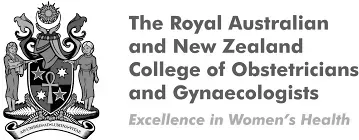Hysteroscopy
What is a Hysteroscopy?
Hysteroscopy is a minimally invasive procedure that allows a doctor to look inside the uterus to diagnose and treat causes of abnormal bleeding, among other conditions. This procedure involves the use of a hysteroscope, a thin, lighted tube that is inserted into the vagina to examine the cervix and the inside of the uterus.
Who is Suitable for Hysteroscopy?
Hysteroscopy is a relatively safe and well-tolerated procedure that can be performed on women of all ages. However, it is most commonly used to diagnose or treat conditions in women of reproductive age.
Hysteroscopy is typically recommended for individuals who:
- Experience abnormal uterine bleeding.
- Have unexplained infertility.
- Suffer from repeated miscarriages.
- Need to have fibroids, polyps, adhesions, or septa removed.
- Require investigation of abnormal findings from other tests (e.g., ultrasound or hysterosalpingography).
- Need sterilisation or removal of an intrauterine device (IUD).
Benefits of Hysteroscopy
Hysteroscopy is a minimally invasive procedure that can provide several benefits, including:
- Accurate diagnosis: Hysteroscopy allows doctors to visualise the inside of the uterus, making it an effective tool for diagnosing conditions such as polyps, fibroids, and adhesions.
- Treatment options: Many conditions diagnosed using hysteroscopy can also be treated during the same procedure, which can help avoid additional surgeries.
- Minimally invasive: Hysteroscopy is typically performed using a thin, lighted tube inserted through the cervix, meaning there is no need for large incisions.
- Faster recovery time: Because a hysteroscopy is minimally invasive, recovery time is usually shorter than traditional surgery.
- Fewer complications: Hysteroscopy has a lower risk of complications than traditional surgery, such as bleeding, infection, and damage to surrounding organs.
- Can help in infertility: Hysteroscopy can help diagnose and treat specific causes of infertility.
- Can aid in the diagnosis of recurrent miscarriage: Hysteroscopy can help identify and treat uterine abnormalities that may be causing recurrent miscarriages.
Types of Hysteroscopy
There are two main types of hysteroscopy: diagnostic hysteroscopy and operative hysteroscopy.
- Diagnostic hysteroscopy is used to diagnose polyps, fibroids, and adhesions. The procedure uses a thin, lighted tube called a hysteroscope inserted into the uterus through the cervix. During the procedure, the doctor can see the inside of the uterus and diagnose any issues.
- Operative hysteroscopy: This type treats conditions diagnosed during a diagnostic hysteroscopy. The procedure is performed using the same equipment as diagnostic hysteroscopy, but the doctor will also use specialised instruments to perform surgery, such as removing polyps, fibroids, or adhesions.
Alternative Options to Hysteroscopy
There are several alternative options to hysteroscopy that may be used to diagnose or treat conditions in the uterus. These include:
- Ultrasound: Ultrasound can create images of the uterus and ovaries and is often used to diagnose fibroids, polyps, and cysts.
- Pelvic exam: A pelvic exam, where a doctor manually examines the uterus and ovaries, may be used to identify conditions such as fibroids or cysts.
- Endometrial biopsy: This procedure involves taking a small sample of the uterus's lining (endometrium) and is used to diagnose conditions such as abnormal bleeding or endometrial cancer.
- Laparoscopy: This minimally invasive surgical procedure allows a doctor to see the inside of the abdomen and pelvis using a small camera. It can diagnose and treat conditions such as endometriosis, pelvic adhesions, and ovarian cysts.
- Magnetic Resonance Imaging (MRI): MRI scans can create detailed images of the uterus and surrounding structures. It helps diagnose certain conditions such as adhesions, fibroids, and endometrial cancer and in planning surgery, although it is rarely required.
What to do Before a Hysteroscopy?
Before a hysteroscopy, a patient typically undergoes several steps to prepare for the procedure.
- Your doctor will review your medical history and perform a pelvic exam to determine if hysteroscopy suits you.
- If you are experiencing heavy bleeding, your doctor may advise you to stop taking blood thinners, such as aspirin or warfarin, a few days before the procedure.
- You may be asked to avoid eating or drinking anything for a certain period before the procedure.
- You will be given instructions on how to prepare for the procedure, such as taking any medications you have been prescribed.
- The anaesthetic to be used will be considered together with the Anesthetist. This most commonly involves a general anaesthetic or sedation, but it might also involve spinal or local anaesthesia at times.
Hysteroscopy Procedure
Hysteroscopy is a relatively safe and well-tolerated procedure, but it's essential to understand the steps involved to know what to expect. During the procedure:
- You will be placed in a lithotomy position, lying on your back with your feet in stirrups.
- A speculum will be inserted into your vagina to hold it open and allow your doctor to see the cervix.
- The hysteroscope, a thin tube with a light and a camera on end, will be inserted through the cervix and into the uterus.
- Your doctor can see the inside of the uterus on a screen and diagnose or treat any issues they find.
- If the hysteroscopy is operative, special instruments will be inserted through the hysteroscope to perform the surgery.
What to Expect After a Hysteroscopy?
The recovery time varies from person to person and depends on the type of hysteroscopy and the underlying condition that was treated. In general, patients can expect to experience the following after a hysteroscopy:
- You will be moved to a recovery room, where you will be monitored until the anaesthesia wears off.
- You may experience cramping and bleeding for a few days after the procedure.
- You will be given instructions on how to care for yourself at home, such as managing pain and bleeding and when to return for a follow-up appointment.
- You may be able to resume normal activities within a day or two after the procedure, but you should avoid strenuous activity or sexual intercourse for a few days.
- It is important to follow your doctor's instructions and report any signs of infection, excessive bleeding or fever.
Hysteroscopy Prognosis
The prognosis for diagnostic hysteroscopy is generally reasonable. In most cases, the procedure can accurately diagnose the underlying condition, and further treatment can be planned accordingly.
The prognosis for operative hysteroscopy depends on the condition being treated. For example, if fibroids or polyps are removed, the patient may experience improved symptoms such as heavy bleeding or pelvic pain. If adhesions or scar tissue are removed, the patient may experience an improvement in infertility.
If hysteroscopy is done to assist in diagnosing infertility or recurrent miscarriage, it may reveal underlying issues that can't be treated with hysteroscopy. The patient may need additional treatments or investigations.
The prognosis for hysteroscopy is generally good, and many women can return to normal activities soon after the procedure. However, discussing the potential risks and benefits with Dr Alyousif before the procedure is essential.
Hysteroscopy Risks
Hysteroscopy is a relatively safe and well-tolerated procedure, but like any medical procedure, it does carry some risks.
- Bleeding: Hysteroscopy may cause bleeding, ranging from light spotting to heavy bleeding. This bleeding may be caused by the procedure or by removing any growths or abnormal tissue.
- Infection: There is a small risk of disease following hysteroscopy. Symptoms of infection include fever, foul-smelling discharge, and pain or tenderness in the pelvic area.
- Perforation: There is a risk of perforation, or puncture, of the uterus or other organs during the procedure. This can cause bleeding, pain, and the need for additional surgery.
- Fluid overload: As fluid is used to hold the walls of the uterus open, some may leak into your bloodstream, causing problems such as salt imbalance and wet lungs
- Adverse reaction to anaesthesia: Some people may have an allergic reaction or other adverse reactions to the anaesthesia used during the procedure.
- Uterine contractions: In some cases, hysteroscopy can cause the uterus to contract, which can cause cramping or pain.
What if Hysteroscopy is Delayed?
Delaying a hysteroscopy may prolong the diagnosis and treatment of a condition, and it may become more complicated or harder to treat over time.
If a hysteroscopy is delayed, it's important to discuss the reasons, potential risks, and benefits with Dr Alyousif and schedule a follow-up appointment as soon as possible.
Cost of Hysteroscopy
- Public Hospitals: If covered by Medicare, the cost can be minimal, though there may still be fees for consultations or follow-up care.
- Private Hospitals: Depending on the complexity of the procedure and the hospital, costs can range from AUD 1,500 to AUD 5,000 or more.
- Specialist Fees: The initial consultation and follow-up visits with a specialist can add additional costs, typically AUD 150 to AUD 300 per visit.



Contact
Melbourne IVF
268 Manningham Rd, Templestowe Lower VIC 3107
New Patient - (03) 9006 5570
Existing Patient - 03 9473 4444
Practice Hours:
Mon - Fri 7:00 am to 4:30 pm
Sat - by prior arrangement
All Rights Reserved | Dr Yousif Alyousif
